Results 8,031 to 8,040 of 12091
Thread: Anandtech News
-
04-13-18, 02:05 PM #8031
Anandtech: Corsair Unveils "Pearlescent White" Dominator Platinum Special Edition Con
Corsair this week introduced its new Dominator Platinum series memory modules designed for modders and enthusiasts primarily interested in style. The new Dominator Platinum Special Edition Contrast DDR4 DIMMs (ed: yes, that's really the full name) don't boast extreme data transfer rates out of the box, but the manufacturer says that they will offer a decent overclocking headroom.
The Corsair Dominator Platinum SE Contrast memory kits will be available in 32 GB density, in dual-channel (2×16 GB) and quad-channel (4×8 GB) versions. The modules are speced for 3466 MT/s data transfer rate with CL16 18-18-36 timings at 1.35 V. The new Dominator Platinum SEC DIMMs are based on Samsung’s hand-picked DRAM ICs, are built on Corsair’s specially-designed 10-layer PCBs, and feature XMP 2.0 profiles to automatically set their frequencies and latencies when they are installed into compatible PCs (and appropriate BIOS settings are activated).
The main selling point of the Dominator Platinum Special Edition Contrast memory kits are their highly-contrast DHX cooling systems featuring pearlescent white heat spreaders and glossy black light bars with white LEDs on top. The DHX cooling system were designed specifically to maximize heat dissipation and therefore improve overclocking potential of DIMMs. According to Corsair, the Dominator Platinum SEC can “push the latest Intel platforms to their limits”, which is not surprising as memory modules based on Samsung’s B-die DRAM devices can easily run at 4000 MT/s data transfer rates and higher even without sophisticated cooling.
All Corsair Dominator Platinum Special Edition Contrast memory kits will be individually numbered and will be initially available exclusively from Corsair’s online stores in the U.S., the U.K., and Germany. In the U.S., the new dual-channel and quad-channel kits will retail for $440 and $480, respectively.
Related Reading:Corsair's Dominator Platinum Special Edition Contrast Speed Sub-Timings Voltage Kit
Config.Kit
CapacityPN Price DDR4-3466 CL16 18-18-36 1.35 V 4×8 GB 32 GB CMD32GX4M4C3466C16W $480 Exc Tax
£435 Inc. VAT
€475 Inc. Tax2×16GB CMD32GX4M2C3466C16W $440 Exc Tax
£400 Inc. VAT
€435 Inc. Tax
- RGB Fan for Corsair Dominator Platinum DDR4 Launched: $70 MSRP
- CORSAIR Unveils Dominator Platinum Special Edition Torque 32GB DDR4 Memory Kits
- Corsair Launches Vengeance 32 GB Quad-Channel DDR4-4000 SO-DIMM Kit for $595
- Corsair Builds 32 GB DDR4-4333 Kit, Only for Pre-Binned Coffee Lake CPUs
- Corsair Weds RGB Lighting and White Heat Spreaders in Vengeance RGB White DDR4 DIMMs
- Corsair Announces Dominator Platinum Special Edition and Vengeance LED Memory Modules
- Corsair Launches Dominator Platinum Memory Modules for ASUS ROG Systems
More...
-
04-13-18, 03:32 PM #8032
Anandtech: MSI GT63/GT83 Titans Upgraded with Six-Core CPUs, Samsung’s PCIe SSDs
Among the many laptops getting a refresh this month alongside Intel's new 8th gen Core processors are the 15.6-inch GT63 and the 18.4-inch GT83 desktop replacement laptops, both of which are receiving hex-core CPUs along with faster Samsung SSDs and DRAM. Designed to offer ultimate performance at any cost, these laptops are MSI's no-compromises devices, meaning the best CPUs, the best GPUs, and the best storage that can be reasonably fit into a luggable computer.
Before we proceed to the details regarding the upgrade, it is necessary to note that while the MSI GT83 Titan is up updated version of the MSI GT83VR Titan released last year, the situation is a bit different with its younger brother, the MSI GT63 Titan. The latter builds upon the MSI GT62VR Dominator Pro laptop that was positioned a bit below MSI's Titans. With the new generation, MSI decided to simplify its branding, and instead of releasing another Dominator Pro, it moved the GT63 to its higher-end Titan category. In addition to repositioning, the GT63 Titan have got a new keyboard featuring per-key RGB lighting, jut like its higher-end GT83 Titan and GT75 Titan brethren, so from the styling perspective MSI’s Titans have a number of similarities.
MSI reserved the “fully unlocked” Core i9-8950HK CPU (six cores, 2.9 – 4.8 GHz, 12 MB LLC) for its flagship GT83 Titan and GT75 Titan notebooks, so the GT63 Titans will be equipped with up to Core i7-8850H (six cores, 2.6 – 4.3 GHz, 9 MB LLC) processors. There is a rationale behind such move. The MSI GT63 Titan is positioned below the GT75 Titan and must be significantly cheaper, which is why MSI did not equip it with a top-of-the-range CPU.
Intel’s Coffee Lake-H processors officially support DDR4 memory at 2666 MT/s, therefore the GT83 Titan and the GT63 Titan notebooks come with up to 64 GB of DDR4-2666 memory. MSI says that all of its GT-series DTR machines are equipped with Samsung memory, so we can expect it to be made using one of the latest process technologies and offer a certain level of overclocking headroom.
Moving on to storage sub-system upgrades of the MSI GT Titan laptops. From now on, all the GT Titan-series PCs will use Samsung’s “latest” SSDs with a PCIe interface. Considering the fact that computer makers equip their systems with OEM drives, it is safe to assume that the higher-end versions of the GT63/GT83 laptops use Samsung’s PM981-series SSDs. The higher-end MSI GT83 Titan features three M.2 slots (two supporting PCIe and SATA, one supporting only SATA), so it will be able to run two fast SSDs in RAID 0 mode and thus offering very high read and write speeds. Meanwhile, all MSI GT Titans have a 2.5-inch bay for DFF storage devices for high-capacity drives.
With its Spring update for its Titans, MSI focused primarily on CPU and memory/storage, but not display panels. The MSI GT83 Titan still comes with an 18.4-inch FHD IPS panel featuring a 60 Hz refresh rate that the company introduced in 2018. Meanwhile, the MSI GT63 Titan can be equipped with a 15.6-inch FHD panel with a 120 Hz refresh rate and a 3 ms response time. Alternatively, the GT63 Titan can be outfitted with a 15.6-inch UHD panel with a 60 Hz refresh rate.
Leading retailers already sell MSI’s GT63 Titan and GT83 Titan DTR laptops. The entry-level Titan is available starting at $2,133, whereas the highest-end MSI gaming notebook is sold for $5,699 in a beefy configuration.MSI's 2018 GT63 Titan and GT83 Titan Laptops GT63 Titan GT83 Titan Display Diagonal 15.6" 18.4" Resolution 1920×1080
3840×21601920×1080Type IPS Refresh 120 Hz
60 Hz60 Hz Response Time 3 ms
unknownunknown CPU Up to Intel Core i7-8850H
6C/12T
2.6 – 4.3 GHz, 9 MB LLCUp to Intel Core i9-8950HK
6C/12T
2.9 – 4.8 GHz, 12 MB LLCPCH HM370 CM246 Graphics NVIDIA GeForce GTX 1070 with 8 GB GDDR5NVIDIA GeForce GTX 1080 with 8 GB GDDR5XNVIDIA GeForce GTX 1070 with 8 GB GDDR5 in SLINVIDIA GeForce GTX 1080 with 8 GB GDDR5X in SLIRAM Up to 64 GB DDR4-2666 Storage M.2 1 × M.2-2280 slot supporting PCIe 3.0 x4/SATA3 × M.2-2280 slots (two supporting PCIe 3.0 x4, one supporting SATA)DFF One 2.5" bayODD - Blu-ray burner Wi-Fi Killer 2 ×2802.11ac Wi-FiBluetooth Bluetooth 5 Ethernet Killer 1 GbE controller USB 3 × USB 3.1 Gen 2 Type-A1× USB 2.0 Type-A1× USB 3.1 Gen 2 Type-C2 × USB 3.1 Gen 2 Type-A3× USB 3.1 Gen 1 Type-A1× USB 3.1 Gen 2 Type-C (via TB3)Thunderbolt - 1 × Thunderbolt 3Display Outputs 1 × Mini DisplayPort 1.41× HDMI 2.0bAudio 4 × 2 W speakers1× 3W subwoofer
Microphones
3.5-mm audio jack for headset
3.5-mm audio jack for microphone4 × 3 W speakers1× 3W subwoofer
Microphones
3.5-mm audio jack for headset
3.5-mm audio jack for microphoneKeyboard RGB-backlit keyboard with per-key RGB lighting Other I/O HD webcam, card reader Battery 75 Wh Dimensions Width 39 cm | 15.35" 45.8 cm | 18" Depth 26.6 cm | 10.47" 33.9 cm | 13.34" Thickness 4 cm | 1.57" 42 - 69 mm | 0.16" - 2.7" Weight 2.94 kg | 6.48 lbs 5.5 kg | 12.12 lbs Price Depends on configuration
Buy MSI GT83 Titan: i7-8850H, 32 GB RAM, GTX 1080 SLI, 1 TB SSD, 1 TB HDD on Amazon.com
Related Reading:
- The MSI GT83VR Titan Review: 1080 Times 3
- MSI at CES 2018: Updated GT75VR Gaming Laptop Receives Killer (Wireless-AC 1550) Upgrade
More...
-
04-14-18, 08:17 AM #8033
Anandtech: MSI Upgrades Budget Laptops with Intel’s CFL-H: Six-Core Notebooks Start a
Traditionally, PC makers tend to upgrade their premium product series with the latest CPUs or GPUs first and only then expand usage of new chips to more affordable product lineups. This was not the case with MSI this month, which is introducing a variety of relatively inexpensive laptops running Intel’s Coffee Lake-H CPUs with up to six cores. Many of these models are already available
We have already observed MSI’s premium GT Titan, GS Shadow, and GE Raider gaming laptops updated with Intel’s six-core Core i7 and Core i9 CPUs, but MSI also installed new chips into considerably more affordable GP-, GL-, GF-, and GV-series notebooks. These mobile PCs are basically “working horses” tailored for gaming and multimedia applications aimed at those who would like to have some extra CPU and GPU oomph (when compared to mainstream designs), but who are not ready to invest massive amounts of money in premium machines. For example, MSI’s GV62 8RD-034 laptop based on Intel’s six-core Core i7-8750H and NVIDIA’s GeForce GTX 1050-series GPU is now available starting at $1,099.
Buy MSI GV62: 15.6-inch/60Hz, i7-8750H, GeForce GTX 1050-Series for $1099 on Amazon.com
MSI’s GP-, GL-, GF-, and GV-series notebooks use very similar 15.6-inch/17.3-inch chassis and platforms, so their differences are mostly cosmetic and limited to exact configurations (e.g., different GPUs, storage options, USB 3.1 Gen 2 support, etc.), keyboard backlighting, battery capacity, weight and so on. The new MSI GP, GL, GF, and GV laptop families are based on the Intel HM370 PCH and therefore support the key features of Intel’s 300-series mobile platforms (e.g., integrated USB 3.1 Gen 2 support, etc.) albeit not on all SKUs. The systems can house up to 32 GB of DDR4-2666 memory, one or two M.2 slots for SSDs, a 2.5-inch bay for DFF storage devices and so on. Premium versions of MSI’s GP-, GL-, GF-, and GV-series notebooks with Intel’s six-core Core i7 processors feature 15.6- or 17.3-inch IPS FHD display panels with a 120 Hz refresh rate and a 3 ms response time, others come with standard FHD LCDs. Check out the spec list in the table below.
Buy MSI GP63: 15.6-inch/60Hz, i7-8750H, GTX 1050 Ti, 16 GB RAM, 128 GB SSD, 1 TB HDD on Amazon.com
MSI’s new GP-, GL-, GF-, and GV-series laptops are starting to hit the market in the U.S. right now, availability of their configurations will expand in the coming weeks and months. Their presence on other markets depends on MSI’s plans for these markets, supply of components, and other factors.General Specifications of MSI's 2018 GP, GL, GF, and GV Laptops GP GL GF GV LCD Diagonal GP63: 15.6"
GP73: 17.3"GL63: 15.6"
GL73: 17.3"GF62: 15.6"
GF72: 17.3"GV62: 15.6"
GV72: 17.3"Resolution 1920×1080 Features Standard: IPS
Option 1: 120 Hz refresh rate, 3 ms response time
Option 1: IPS/VA with 94% NTSC coverage (15.6" models only)CPU Up to Intel Core i7 8750H with six cores PCH Intel HM370 Graphics Integrated HD Graphics 630 (24 EUs) Discrete GeForce GTX 1050 Ti 4 GB
GeForce GTX 1060 6 GB
GeForce GTX 1070 8 GBGeForce GTX 1050 2 GB
GeForce GTX 1050 Ti 4 GBGeForce GTX 1050 Ti 4 GB
GeForce GTX 1060 6 GBGeForce GTX 1050 2 GB
GeForce GTX 1050 Ti 4 GB
GeForce GTX 1060 3 GBRAM 32 GB DDR4-2400/2667
2 SO-DIMM slotsStorage SSD 2 × M.2-2280 slots on select SKUs 1 × M.2-2280 slot supporting PCIe 3.0 x4 and SATA HDD/SSHD 1 × 2.5-inch bay Wireless Wi-Fi 802.11ac Wi-Fi Bluetooth Bluetooth 5.0 USB USB 2.0 Type-A: supported on select SKUs
USB 3.0 Type-A: supported on all SKUs
USB 3.1 Type-A: supported on select SKUs
USB 3.1 Type-C: supported on select SKUsDisplay Outputs 1 × HDMI 1.4 (on SKUs featuring GeForce GTX 1050/1050 Ti)
1 × HDMI 2.0 (on SKUs featuring GeForce GTX 1060)
1 × mDP with DP 1.2Gigabit Ethernet Killer E2400 Intel I219-LM Killer E2400 Intel I219-LM Card Reader SD card reader Webcam 720p camera Other I/O Microphone, stereo speakers, audio jack Keyboard Backlighting RGB Red RGB Red Battery 51 Wh 41 Wh Dimensions 15.6" Width 383 mm Depth 260 mm Thickness 29 mm 22 - 29 mm 17.3" Width 419 mm 419 mm 419.9 mm Depth 287 mm 287 mm 287.8 mm Thickness 32 mm 33 mm 29.8 - 32 mm Weight 15.6" 2.2 kg 17.3" 2.7 kg 2.7 - 2.8 kg Starting Price
(among systems available today)15.6" $1,299 $929 unknown $1,099 17.3" $1,349 $1,149 unknown $1,499
Buy MSI GP73: 17.3-inch/60Hz, i7-8750H, GTX 1070, 16 GB RAM, 256 GB SSD, 1 TB SSHD on Amazon.com
Related Reading:
- MSI's GT75 Titan DTR Laptop Gets Coffee Lake Treatment: Core i9 + GeForce GTX 1080
- MSI at CES 2018: Updated GT75VR Gaming Laptop Receives Killer (Wireless-AC 1550) Upgrade
- MSI Announces GS65 Stealth: Thin & Lighter 15-Inch Gaming Laptop
More...
-
04-16-18, 11:08 AM #8034
Anandtech: Acer’s Chromebox CXI3 Available in Four Configs: Up to Core i7-8550U, Up t
Acer has quietly started to sell its Chromebox CXI3 UCFF desktop, which it formally introduced earlier this year. The minuscule 0.9-liter system runs Google’s Chrome OS and the manufacturer originally positioned it for education market, but the actual configurations of these PCs and their prices indicate that they may be aimed at other kinds of markets too.
Announced earlier this year, the Chromebox CXI3 systems run Intel’s Kaby Lake processors (most of which belong to the 8th Gen Core family) with two or four cores, thus offering a decent level of performance for UCFF desktops. The key selling point of the Chromebox CXI3 besides its compact dimensions is connectivity. The system is outfitted with a USB 3.1 Gen 1 Type-C port along with five USB 2.0/3.0 Type-A ports (depending on the model), a GbE connector, an HDMI output, and a microSD card reader. On the wireless side of things, it has a 2×2 802.11ac Wi-Fi controller that also supports Bluetooth 4.2 LE.
Acer’s Chromebox CXI3 recently started to sell at NextWarehouse and TigerDirect in four configurations running quad-core Core i5-8250U or Core i7-8550U CPUs as well as dual-core Core i3-7130U or Celeron 3865U processors. The low-end Celeron-based version is equipped with 4 GB of DDR4 memory and 32 GB of solid-state storage, whereas higher-end variants are outfitted with 8 – 16 GB of RAM and 64 GB of storage. Prices of the systems range from a rather democratic $308 to a rather tangible $777. While schools and libraries can afford sub-$500 systems, it is extremely unlikely that they will invest nearly $800 in a Chromebox.
Google and its partners are pushing the Chrome OS to various unconventional mobile PCs (such as tablets, convertibles, and 2-in-1s), possibly to tap into markets where the operating system (and Android) was not present before (or has been unsuccessful). Meanwhile, Acer appears to see Chrome’s potential on the desktop, a market segment that Dell, HP, and Samsung considered irrelevant for the OS. Bearling in mind configurations and prices of the new Chromebox CXI3, it is evident that the systems are positioned not only for schools and libraries, but rather for more demanding customers. Furthermore, the fact that they have popped up in retail indicates that Acer is looking at consumers.General Specifications of Acer's Chromebox CXI3 DT.Z0NAA.001 DT.Z0RAA.001 DT.Z0SAA.001 DT.Z0TAA.001 CPU Intel Celeron 3865U
2C/2T
1.8 GHz
2 MB
15 WIntel Core i3-7130U
2C/4T
2.7 GHz
3 MB
15 WIntel Core i5-8250U
4C/8T
1.6 - 3.4 GHz
6 MB LLC
15 WIntel Core i7-8550U
4C/8T
1.8 - 4 GHz
8 MB LLC
15 WiGPU HD Graphics 610
12 EUs
300 MHz - 900 MHzHD Graphics 620
24 EUs
300 MHz - 1 GHzUHD Graphics 620
24 EUs
300 MHz - 1.15 GHzMemory 4 GB DDR4-2133 8 GB DDR4-2133 16 GB DDR4 Storage SSS 32 GB 64 GB Other microSD Wireless 2×2 802.11ac Wi-Fi + Bluetooth 4.2 Ethernet 1 × Gigabit Ethernet with RJ45 connector Display Outputs HDMI Audio 1 × TRRS connector USB 1 × USB 3.1 Type-C
5 × USB 2.0/3.0 Type-ADimensions Width: 5.8 inches | 15 cm
Depth: 5.9 inches | 15 cm
Thickness: 1.6 inches | 4 cmExtra 100 × 100 mm VESA mount PSU External OS Google Chrome OS Price
(NextWarehouse)$308 $478 $535 $777
A big question is whether they latter are going to bite at Chromebox that costs nearly $800. For around $700 it is possible to get a Core i7-8250U- and Windows 10-based laptop. On the desktop side of things, there is a wide choice of SFF desktops priced at around $800 (1, 2).
Buy Acer Swift 3: 14-inch FHD, Core i5-8250U, 8 GB RAM, 256 GB SSD, Windows 10, for $695.95 on Amazon.com
Related Reading:
- Acer Announces New Chromebooks And Chromebox Devices
- Acer Announces Chromebook Tab 10: A Tablet Running Google’s Chrome OS
- Lenovo Launches 2-in-1 Flex 11 Chromebook: Quad-Core SoC, 4 GB RAM, from $279
- HP Unveils Chromebook x2: A 12.3-inch 2400x1600 2-in-1 with Intel Core-Y
- Google Launches Pixelbook: 12.3” LCD, Kaby Lake, 16 GB RAM, 512 GB SSD, Assistant, Stylus
- New Chrome OS Update Enables Google Play on Acer’s and ASUS' Chromebooks
More...
-
04-16-18, 01:07 PM #8035
Anandtech: StarTech Launches Thunderbolt 3 USB Hub with 3 USB 3.1 Controllers & Power
StarTech has released a new Thunderbolt 3 USB hub that features three dedicated USB controllers and provides up to 20 Gbps of aggregated bandwidth to USB devices. The company aims the device at users of various bandwidth-demanding professional equipment that uses a USB 3.1 Gen 1 or Gen 2 interface. Since we are dealing with a device for specialized equipment, its price appears to be rather high.
StarTech’s Thunderbolt 3 to USB 3.1 Controller Adapter (TB33A1C) is based on Intel’s JHL6540 TB3 controller (Alpine Ridge, so it cannot work with USB 3.1 Gen 2 Type-C hosts) and is outfitted with two ASMedia’s ASM1042A (PCIe 2.0 x1 to USB 3.0) ICs and one ASM1142 (PCIe 3.0 x1 to USB 3.1 Gen 2) USB controller to ensure maximum performance for its ports.
The USB hub features one USB 3.1 Gen 2 Type-C, one USB 3.1 Gen 2 Type-A, and two USB 3.1 Gen 1 ports, with oneof the Gen 1 ports supporting the USB Battery Charging 1.2 spec. In addition, the hub has two Thunderbolt 3 port to support daisy chaining or to connect another USB 3.1 Gen 2 device. The hub also comes with a power brick that can deliver 65 W of power to host laptop via a TB3 interface, or USB devices that need more than 15 W provided by Thunderbolt 3 ports by default.
The aggregate bandwidth guaranteed by the StarTech Thunderbolt 3 to USB 3.1 controller adapter is 20 Gbps, and for people who need to ensure that they have the highest USB performance possible on their TB3-only laptops this is its key value (enabled by three USB controllers and multiple ports). There is a catch though. In order to connect two USB 3.1 Gen 2 devices at ~10 Gbps each one will have to use one of the USB 3.1 Gen 2 ports and the second TB3 port, but not both USB 3.1 Gen 2 ports. This is because both Gen 2 ports share one ASM1142 controller and the aggregate bandwidth it supports is limited to 8 ~ 10 Gbps (depends on its implementation) for both headers.
StarTech positions this TB3 USB hub for connecting various bandwidth-demanding devices, such as 3D scanners, storage arrays, audio-video capture, and broadcast equipment. To guarantee their fast and flawless operation, the adapter features maxed-out USB bandwidth, which comes at a price. The Thunderbolt 3 to USB 3.1 Controller Adapter is available for $199.99 from Amazon, and for $263.99 directly from the manufacturer.The StarTech Thunderbolt 3 to USB 3.1 Controller Adapter at a Glance Controller Intel JHL6540 ASMedia ASM1142 2 × ASMedia ASM1042A - Port 2 × Thunderbolt 3 1 × USB-C 3.1 Gen 2
1 × USB-A 3.1 Gen 22 × USB-A 3.1 Gen 1 20V/1.35A DC-IN Bandwidth 40 Gbps 10 Gbps 5 Gbps + 5 Gbps - Notes To connect two USB 3.1 Gen 2 devices at ~10 Gbps each, a USB 3.1 Gen 2 header and the second TB3 connector have to be used. Can be used to charge laptop or USB devices
StarTech.com is one of the leading suppliers of various adapters and hubs, so it is not surprising that it is gradually expanding its collection of Thunderbolt 3 products with new adapters for customers requiring very specific needs. The Thunderbolt 3 to USB 3.1 Controller Adapter is clearly one of such products that is not designed for everyone, but for people who need USB bandwidth to connect high-end scanners, storage arrays (or external SSDs), A/V, and broadcast equipment. Such clients demand maximum performance and are generally used to significant investments in hardware.
Gallery: StarTech Launches Thunderbolt 3 USB Hub with 3 USB 3.1 Controllers & Power Delivery





Buy StarTech Thunderbolt 3 to USB 3.1 Controller Adapter on Amazon.com
Related Reading:
- StarTech's Thunderbolt 3 to Dual 4Kp60 Display Adapters Now Available
- Promise Launches TD-300 9-in-1 Thunderbolt 3 Dock: GbE, HDMI, USB 3.0, TB3 Charging & More
- OWC Launches 13-Port Thunderbolt 3 Dock: GbE, USB-A, SD Card, mDP, FireWire & More
- StarTech Unveils Dual-Display Thunderbolt 2 Docking Station with 12 Ports
- AKiTiO Displays Thunderbolt 3 to 10GBase-T Adapter
- CES 2017: GIGABYTE’s Thunderbolt 3 to 8x USB 3 Dock
- StarTech Launches USB Docking Station With UHD Display Support
- StarTech.com TBT3TBTADAP Thunderbolt 3 to Thunderbolt Adapter Review
- Satechi and StarTech USB 3.1 Gen 2 Type-C HDD/SSD Enclosures Review
More...
-
04-16-18, 03:02 PM #8036
Anandtech: Dell Launches AMD Ryzen-Based Inspiron 13 7000 2-in-1 Convertible, Starts
When AMD announced its Ryzen Mobile processors last October, it had three launch customers with three laptop models. Back in early March this year Dell joined the Ryzen Mobile party with its Inspiron 17 5000 and this month the company expanded its Zen-based offerings with its convertible Inspiron 13 7000 2-in-1 notebook.
Dell currently offers two models of the Inspiron 13 7000 2-in-1, one based on AMD’s Ryzen 5 2500U with the Radeon Vega 8 iGPU, and the other on the more powerful Ryzen 7 2700U with the Radeon Vega 10 iGPU (see exact SKUs that Dell offers in the table below). The systems are equipped with 8 GB or 12 GB of DDR4-2400 memory (can be expanded to 16 GB in built-to-order configurations) as well as a 256 GB SSD, which is fairly standard for mainstream laptops nowadays. The notebook has a 13.3-inch IPS TrueLife-branded glossy LED-backlit touch display with brightness and viewing angles that is normally expected from mainstream IPS LCDs. The display lid features a wide viewing angle webcam with IR, so the machine supports facial recognition and Windows Hello.
I/O capabilities of the Ryzen-powered hybrid Inspiron 13 are the same for all models: a 802.11ac Wi-Fi + Bluetooth 4.2 module, a USB 3.0 Type-C port, two USB 3.0 headers, an HDMI output, a webcam, an SD-card reader, a microphone array, stereo speakers with the Waves MaxxAudio Pro enhancements, a TRRS audio connector, and a backlit keyboard.
The Dell Inspiron 13 7000 2-in-1 laptop comes in 19.2-mm (0.76-inch) thick chassis made of brushed aluminum and weighs up to 1.75 kg (3.86 lbs) depending on the configuration. Metal enclosure should give the Inspiron 13 7000 a premium feel and provide some rigidity to the construction. Meanwhile, the weight of the laptop is a bit too high for a 13-incher (and higher when compared to Lenovo's Ryzen Mobile-based Ideapad 720s).
Dell does not publish battery life of the laptop, but only says that it is equiped with a 42 Wh battery pack. The capacity of the battery is ~10% lower when compared to other Ryzen Mobile-based 13-inch notebooks, so it remains to be seen how long the Inspiron 13 7000 2-in-1 is going to last on one charge and how it compares to rivals featuring the same APUs.
Dell’s Inspiron 13 7000 2-in-1 convertibles featuring AMD’s Ryzen Mobile APUs are already available directly from Dell starting at $730 as well as from leading retailers like BestBuy starting at $700. The latter apparently sells base configurations at slightly lower prices than the manufacturer does.Dell Inspiron 13 7000 2-in-1 Convertible Laptops Good
I7375-A439GRY-PUSBetter
I7375-A446GRY-PUSBest Display Diagonal 13.3" Resolution 1920×1080 Type IPS CPU AMD Ryzen 5 2500U
4C/8T
2.0 - 3.8 GHz
mXFR Support
2 MB L2 + 4 MB L3
Vega 8 iGPU
15 WAMD Ryzen 7 2700U
4C/8T
2.2 - 3.8 GHz
mXFR Support
2 MB L2 + 4 MB L3
Vega 10 iGPU
15 WGraphics AMD Vega 8
512 stream processors
1100 MHzAMD Vega 10
640 stream processors
1300MHzRAM Capacity 8 GB (up to 16 GB) 12 GB (up to 16 GB) Type DDR4-2400 Storage 256 GB SSD Wi-Fi 802.11ac Wi-Fi module (unknown vendor) Bluetooth 4.2 USB 2 × USB 3.0 Type-A (one with PowerShare)
1 × USB 3.0 Type-COther I/O HDMI 1.4, webcam with IR, TRRS connector for audio, speakers, microphone, SD card reader Dimensions Width 322.4 mm | 12.69 inches Length 224 mm | 8.82 inches Thickness 18.7 - 19.2 mm | 0.74 - 0.76 inches Weight 1.75 kg | 3.86 lb Battery Capacity 42 Wh Support 1 Year Mail In Service Includes 24x7 direct access to expert hardware and software support with 1 year Premium Support and Accidental Damage Service. Price Dell.com $730 $880 $1,019 BestBuy $700 $850 -
Buy the Dell Inspiron 13 7000 2-in-1: Ryzen 7 2700U, 12 GB DDR4, 256 GB SSD at Best Buy
Related Reading:
- Acer Unveils Nitro 5: 15.6-inch Gaming Laptop with AMD Ryzen Mobile & Radeon RX560
- More Ryzen Mobile: Acer Swift 3 with 2700U and 2500U Listed, From $750
- AMD Makes a Surprise Appearance: Ryzen Mobile with Qualcomm LTE
- Ryzen Mobile Now On Sale: HP’s ENVY X360
- HP Announces ENVY x360 15 With Ryzen Mobile
- Ryzen Mobile is Launched: AMD APUs for Laptops, with Vega and Updated Zen
Sources: AMD, Dell
More...
-
04-16-18, 03:02 PM #8037
Anandtech: Overclocking The AMD Ryzen APUs: Guide and Results
With AMD’s new launch of Raven Ridge APUs, the Ryzen 3 2200G ($99) and Ryzen 5 2400G ($169), AMD holds the current integrated graphics apex when directly compared against Intel’s current SKU list. One of the most intriguing aspects of AMDs new Ryzen 2000 series desktop APU solutions is the fact that they are unlocked, offering a potential performance boost to both the core, the graphics, and the memory. In this article, we examine overclocking both our launch CPUs, a pair of retail CPUs, as well as going through each of the methods to overclock from each motherboard vendor.
More...
-
04-17-18, 09:23 AM #8038
Anandtech: StarTech’s New Adapter Brings eSATA Storage to Thunderbolt 3 PCs
Alternative headline: StarTech’s New Adapter Weds MacBook Pro and eSATA Storage
StarTech has expanded its lineup of Thunderbolt 3 adapters with a rather extravagant solution that features an eSATA port and a USB 3.1 Gen 2 connector. The dongle allows attaching previous-gen DASes to modern laptops, extending their life, and protecting their owner’s investments.
As the name suggests, Startech’s Thunderbolt 3 to eSATA and USB 3.1 Adapter (TB3ESATU31) has an eSATA port and a USB 3.1 Gen 2 Type-A connector. The eSATA header supports up to four eSATA drives through a port multiplier, allowing to use various external storage devices with new PCs. The dongle requires a standard TB3 port, meaning one that can supply up to 15 W of power and features bandwidth of at least 20 Gbps.
The Thunderbolt 3 to eSATA and USB 3.1 adapter is based on the Intel Alpine Ridge TB3 controller as well as the ASMedia ASM1061 PCIe-to-eSATA bridge. Judging by dimensions of the unit, its internal architecture is hardly very complex. The addition of the USB 3.1 port makes a lot of sense as it makes life easier for owners of products like the LaCie Rugged eSATA that use power from a nearby USB port. Meanwhile, owners of advanced eSATA DAS devices, such as storage arrays with multiple HDDs inside, will keep using their regular power bricks.
StarTech.com’s Thunderbolt 3 to eSATA and USB 3.1 dongle is available for $98.99 from Amazon and for $134.99 from StarTech.com, a price of an external hard drive (keep in mind that some of them are SMR-based and their performance is unpredictable at times). The MSRP may not be exactly a disadvantage of the product. The eSATA standard has never gained much traction outside of the market of professional-grade storage devices. Therefore, most of the eSATA storage that people would like to keep are likely professional-grade storage arrays. If someone is satisfied with performance of such an array and want to keep using it with their shiny new laptop (perhaps, not even for everyday work, but for archival purposes), they are unlikely to be concerned about the price of the Thunderbolt 3 to eSATA dongle.
Buy StarTech Thunderbolt 3 to eSATA and USB 3.1 Adapter on Amazon.com
Gallery: StarTech’s New Adapter Brings eSATA Storage to Thunderbolt 3 PCs



Related Reading:
- StarTech's Thunderbolt 3 to Dual 4Kp60 Display Adapters Now Available
- Promise Launches TD-300 9-in-1 Thunderbolt 3 Dock: GbE, HDMI, USB 3.0, TB3 Charging & More
- OWC Launches 13-Port Thunderbolt 3 Dock: GbE, USB-A, SD Card, mDP, FireWire & More
- StarTech Unveils Dual-Display Thunderbolt 2 Docking Station with 12 Ports
- AKiTiO Displays Thunderbolt 3 to 10GBase-T Adapter
- CES 2017: GIGABYTE’s Thunderbolt 3 to 8x USB 3 Dock
More...
-
04-17-18, 09:23 AM #8039
Anandtech: US Cuts off ZTE From American Tech Suppliers
Yesterday, the U.S. Department of Commerce’s Bureau of Industry and Security (BIS) has announced the activation of a denial order against ZTE, banning the company from US technologies covered under Export Administration Regulations (EAR).
The ban follows an investigation and follow-up guilty-plea in March 2017 that ended with a civil and criminal penalty imposed on ZTE for illegally shipping telecommunications equipment to Iran and North Korea. On top of the $892M monetary penalty, the settlement agreement put ZTE on "probation", with the company agreeing to forfeit their export privileges for seven years and paying the remaining $300M of the original $1.19B fine in case of a breach or further misconduct.
The Department of Commerce has now determined that ZTE has breached the settlement agreement by giving false statements and failing to enact disciplinary actions to parties originally identified as responsible for engaging in the illegal conduct. Instead of reprimanding the employees, the company is stated to have rewarded them with full bonuses.
The activation of the Denial Order has broad consequences for ZTE as it blocks the company in participating in any transaction of “technology” that is subject to the EAR.
What the EAR covers is extremely precise and fine-grained as it tries to characterise military-grade equipment technology. The categories that would most impact ZTE are items falling under categories 3, 4 and 5; Electronics Design Development and Production, Computers, and Telecommunications & Information Security. The telecommunications document is particularly interesting as it covers ubiquitous technologies in use in today’s networking and mobile devices. The EAR makes clear exceptions to radio technologies covered by ITU standards, however then goes on to more specific items which possibly apply to cellular modems and base stations.
ZTE’s main business is networking equipment where they are a major player alongside other mentionable companies such as Nokia, Ericsson, Huawei and Cisco. Category 3 covering Electronics Design Development has a lot more broad implications for this business as it covers semiconductor components that not only can be present in US exported products but may be IP that ZTE licenses to use in-house in their custom networking chipsets. If this is the case, there are wider implications at play as it would severely block the company from developing equipment.
On the consumer devices side ZTE makes heavy reliance on Qualcomm SoCs to power their smartphone products. We briefly talked with ZTE during last MWC about their partnership with Qualcomm and were told that the relationship is very strong and ZTE had continued plans to use Qualcomm chipsets in the future. We have reached out to Qualcomm for comment but haven’t had a response yet, however we see on Qualcomm’s Export Control Assurance (ECA) form the following confirmation of company's products being subject to the regulation:
Qualcomm Incorporated, its subsidiaries and affiliates’ ("Qualcomm") hardware, software, source code and technology (collectively, “Products”) are governed by the export laws of the US and other countries where we do business. Products obtained from Qualcomm, are subject to the US Government (“USG”) export control and economic sanctions regulations, including the Export Administration Regulations (“EAR”, 15 CFR 730 et seq.)The BIS denial order specifically prohibits ZTE under section “FIRST A”:
While I’m not too clear on the exact legal ramifications here and this is just my interpretation, it seems that if Qualcomm would be outright blocked from issuing ZTE an ECA, which is essentially an EAR waiver, and thus not able to sell any of its products to ZTE anymore.
- Applying for, obtaining, or using any license, license exception, or export control document;
The ramifications could go even further because seemingly the EAR applies to re-exports as well, so any other company using US IP would in theory be blocked from selling to ZTE. Semiconductor companies such as SoC vendors make wide use of common foundation IP which often can come from US vendors, say from Cadence or Synopsys. If such products fall under the EAR, then the regulations could have a domino effect on the product chain and also involve non-US silicon vendors such as MediaTek or Samsung.
ZTE’s only comment on the story comes as a short press release on its website:
ZTE is aware of the denial order activated by the United States Department of Commerce. At present, the company is assessing the full range of potential implications that this event has on the company and is communicating with relevant parties proactively in order to respond accordingly.Seemingly in tandem with the US BIS announcement, the UK’s National Cyber Security Centre issued an advice statement to the UK telecommunications sector highlighting the potential national security risk from using ZTE equipment or services cannot be mitigated.
Following the announcements ZTE has suspended trading in the company’s shares.
More...
-
04-17-18, 11:46 AM #8040
Anandtech: Toshiba Launches S300 and V300 HDDs for Surveillance and Video Application
Toshiba introduced two new families of retail 3.5-inch hard drives designed for surveillance and video streaming applications. The S300 lineup will offer high performance and up to 10 TB capacity, whereas the V300 is focused on energy efficiency and quiet operation with capacities of up to 3 TB. Both families of HDDs will be available in retail starting this month.
The Toshiba S300 series of hard drives includes models featuring 4 TB, 5 TB, 6 TB, 8 TB and 10 TB capacities. The latter three products belong to the MD06ACA-V lineup introduced in October, the former two probably rely on a different platform, but support the same feature set. The 6 TB, 8 TB and 10 TB drives feature a 7200 RPM spindle speed, a 256 MB cache buffer, and a SATA 6 Gbps interface. All of the Toshiba S300 series HDDs support ATA streaming technology, and with their intended market in mind, can record data from up to 64 HD cameras at once, quickly wake up from idle and resume work, etc. These drives are prepared to work in vibrating multi-drive environments of video surveillance applications (SDVR, SNVR, Hybrid SDVR) and therefore support a number of specific enhancements, including top and bottom attached motors, RVFF sensors, second-generation dual-stage actuators. As for endurance, the S300 series are rated for 180 TB per year and one million hours MTBF.
When it comes to performance, the top-of-the-range S300 10 TB supports up to 248 MB/s media to buffer transfer speeds due to its very high areal density (it is based on seven 1.42 TB 3.5-inch platters). Other HDDs in the series use fewer platters with a lower areal density and therefore their performance is slightly lower as well. As for power consumption of the S300-series HDDs, it varies between 7.88 W and 9.48 W (operating power), depending on the model.
Moving on to the Toshiba V300 family of hard drives. These HDDs are entry-level consumer drives aimed at video streaming applications and featuring a 5000 RPM-class spindle speed and up to 64 MB buffers. The V300 HDDs can quickly resume work from sleep, they support the ATA streaming technology, and they can record data from up to four HD cameras at once. These drives are based on 1 TB platters, so expect their performance to be in line with similar products from Toshiba released earlier. As for power consumption, it varies between 4.2 W and 5.7 W, depending on the SKU.
Toshiba stresses that the V300 series HDDs are mostly aimed at consumers who want inexpensive 3.5-inch HDDs for their HTPCs and similar applications. They can also be used for various home security applications, provided that four cameras are enough.
Toshiba will begin shipments of its S300 and V300 HDDs this month, the company said. The V300 series will be officially priced between $49.99 and $89.99, whereas the S300 drives carry MSRPs between $119.99 and $349.99. Bear in mind that recommended prices tend to be higher than the retail prices, so don't be surprised if the new hard drives end up with lower, more competitive street prices.Specifications of Toshiba's S300 and V300 HDDs S300 V300 AnandTech.com 10 TB 8 TB 6 TB 5 TB 4 TB 3 TB 2 TB 1 TB Spindle Speed (RPM) 7200 unknown 5940 5700 5400 Interface SATA 6 Gbps DRAM Cache 256 MB unknown ATA Streaming Supported Sequential Data Transfer Rate (host to/from media) 249 MB/s 241 MB/s MTBF 1 million unknown Rated Annual Workload 180 TB 72 TB Acoustics (Seek) 34 dBA unknown Power Consumption Random read/write 9.48 W 8.61 W 7.88 W unknown up tp 5.7 W Idle 7.15 W 6.33 W 5.59 W unknown down to 4.2 W Warranty 3 Years 2 years MSRP $350 $250 $190 $150 $120 $90 $70 $50
Buy Toshiba X300 6 TB HDD on Amazon.com
Related Reading:
- Toshiba Unveils 10TB HDDs for Video Surveillance: Support for up to 64 HD Streams
- Seagate Launches SkyHawk AI HDDs for Intelligent NVRs
- Western Digital Expands Purple Lineup with a 10 TB Helium-Filled HDD
- Toshiba Announces 10 TB MG06ACA HDD: Seven Platters, 249 MB/s, NAND Cache
More...
Thread Information
Users Browsing this Thread
There are currently 17 users browsing this thread. (0 members and 17 guests)




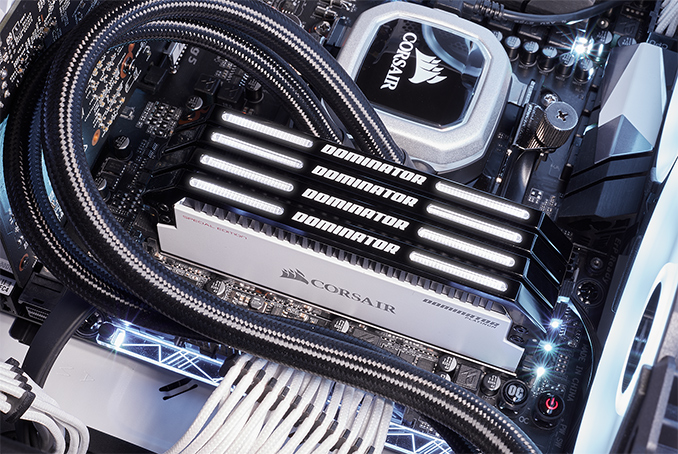
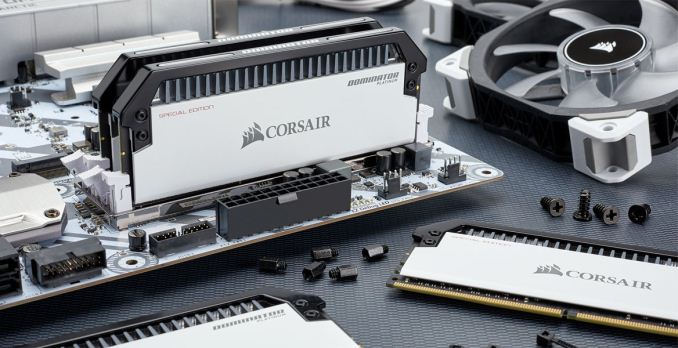
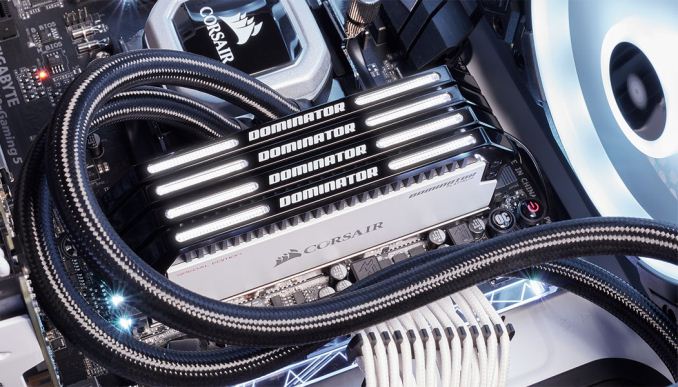

 Quote
Quote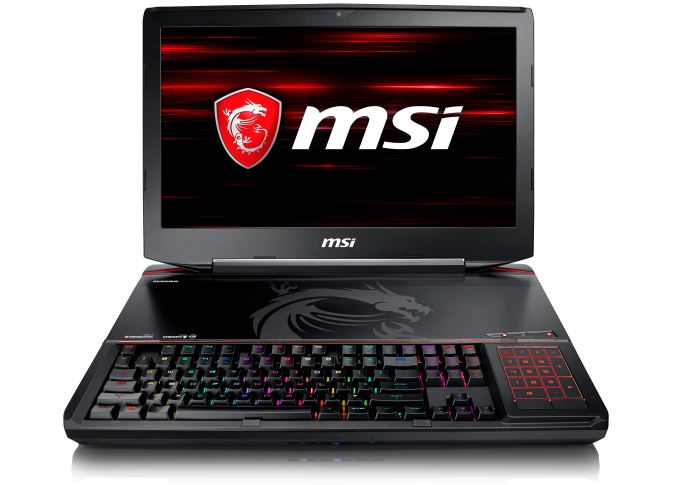
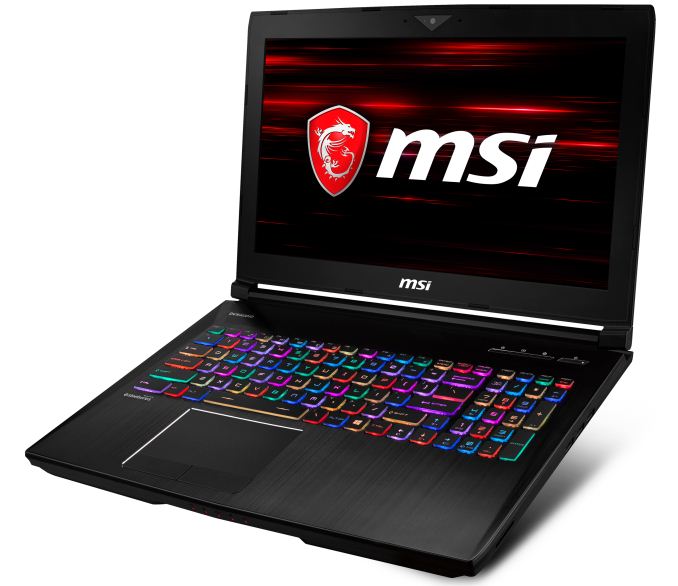
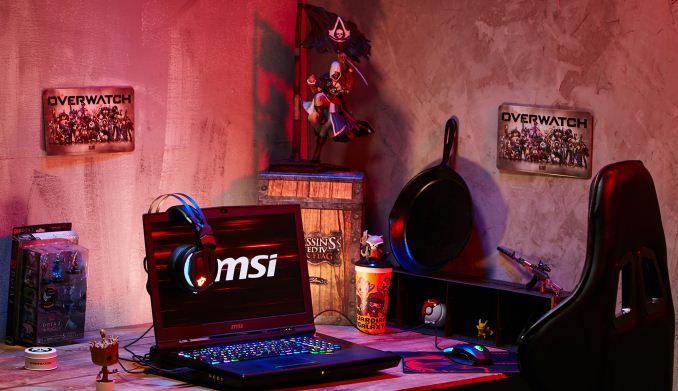
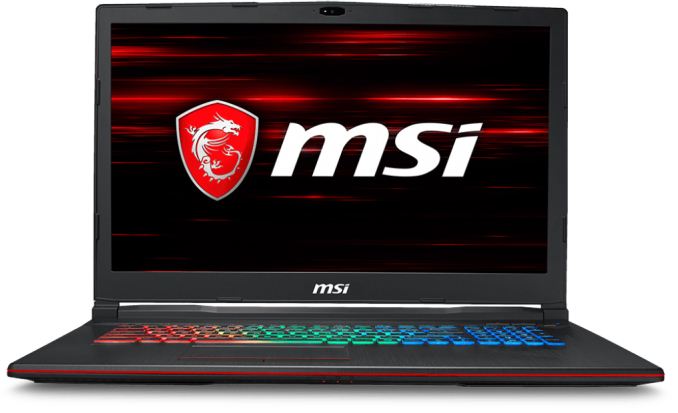
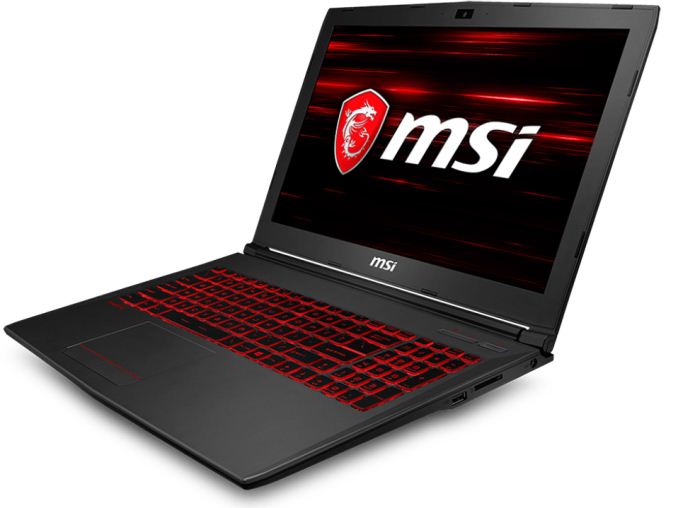
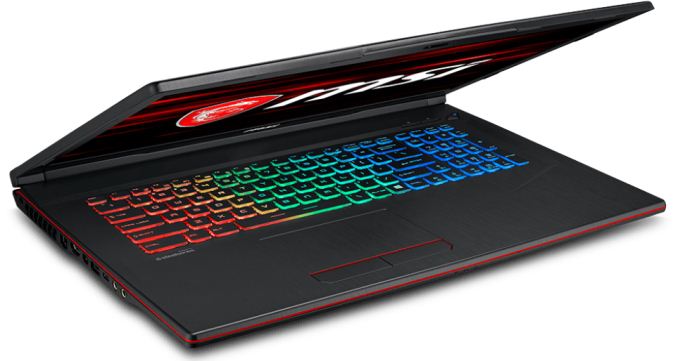
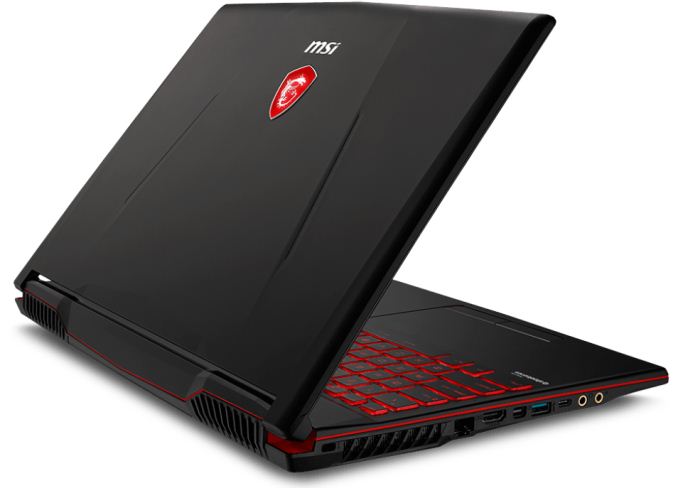
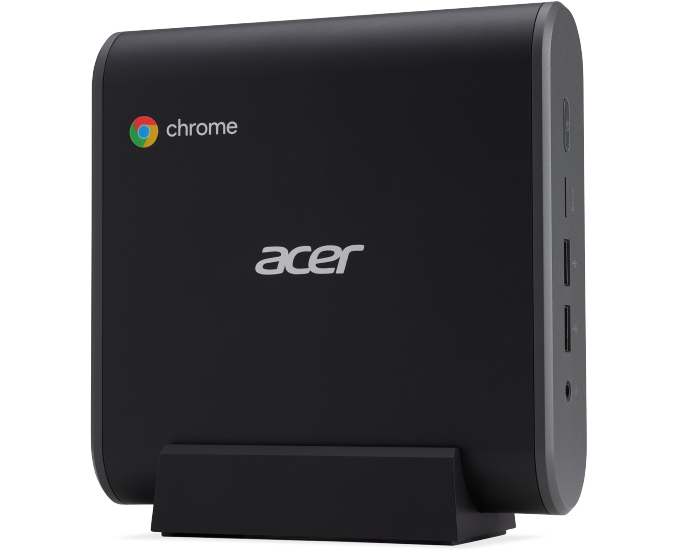

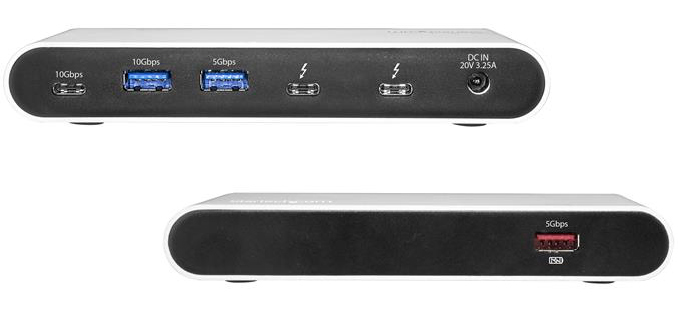
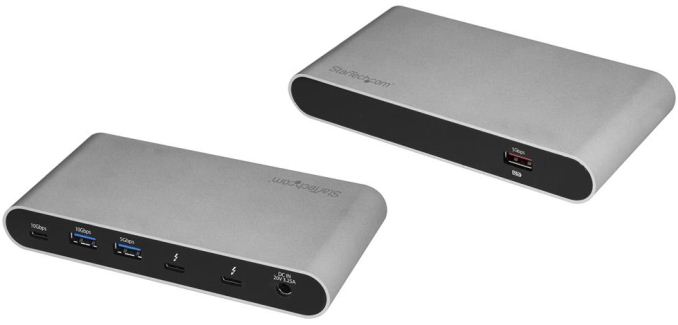
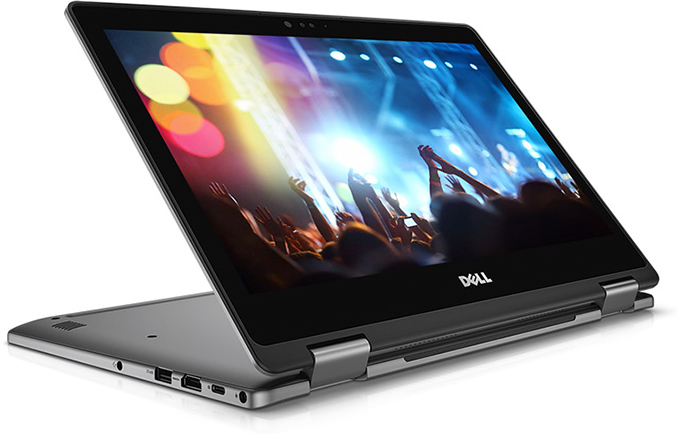
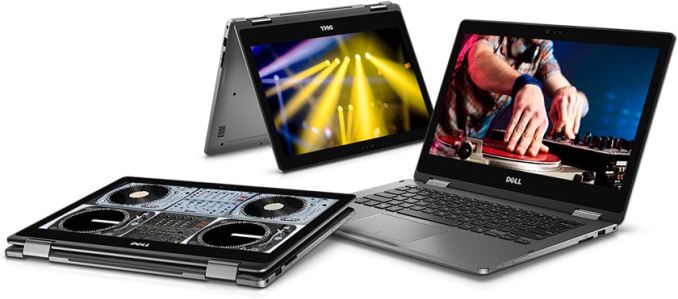
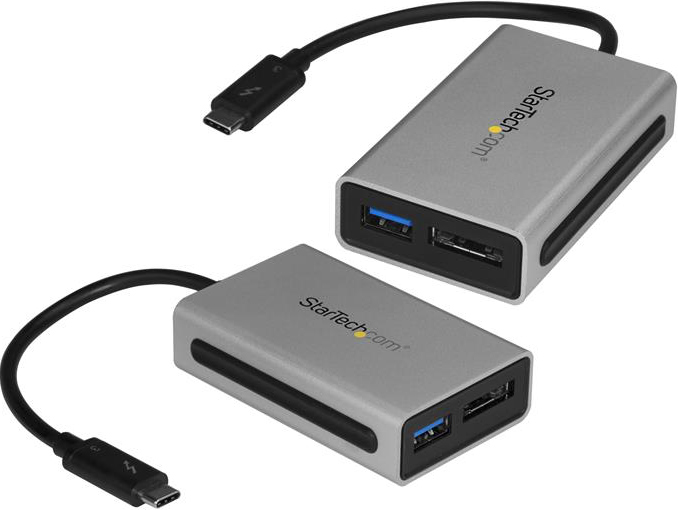
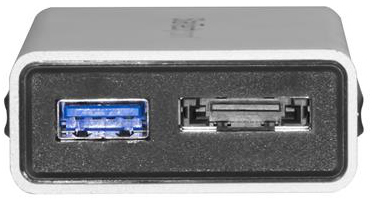


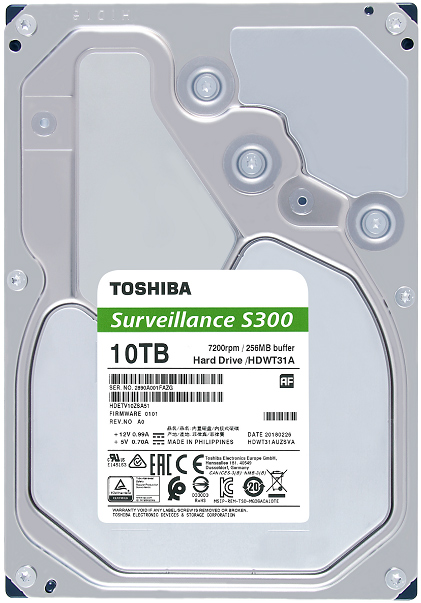
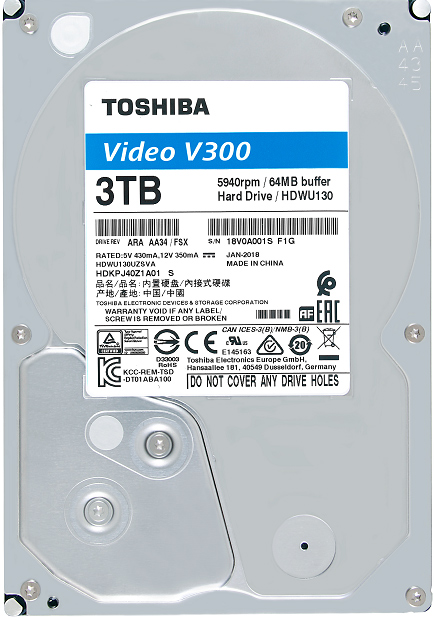
















Bookmarks